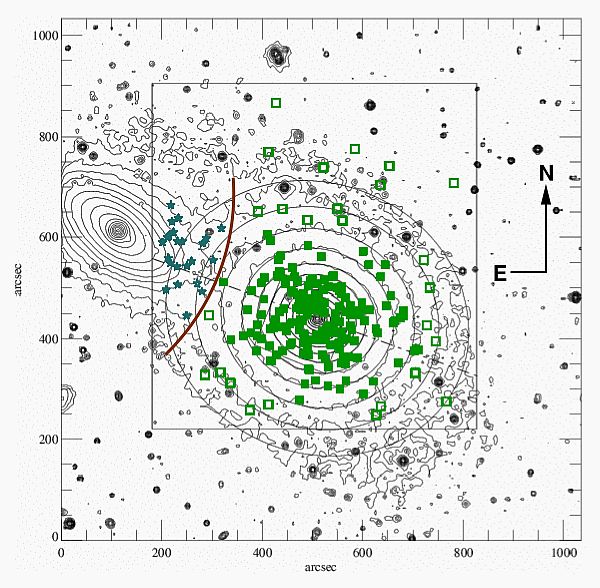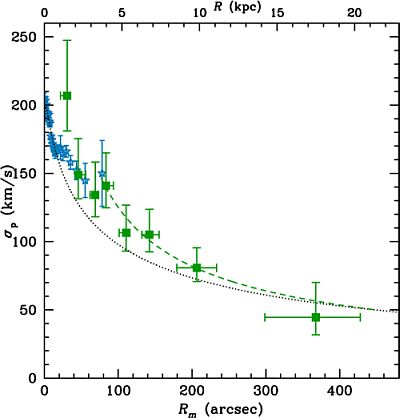 | |||
|
| Home > Public Information > Scientific Highlights > 2007 > The Planetary Nebula Spectrograph Project |
The Planetary Nebula Spectrograph Project | ||||
|
WHT+PN.S
The confirmation in the 1970s that dark matter dominates the mass of the universe came about from dynamical studies of spiral galaxies. In these systems, The HI gas disks offer the ideal diagnostic,
since their extended nature allows one to probe
very large radii where dark matter begins to dominate, and their cold disk-like structure ensures that the material is following approximately circular orbits, removing a major ambiguity in the
study of its dynamics.
A similar study of elliptical galaxies would be invaluable, as it would address such basic questions as whether the dark matter halos around these systems are similar to those around spirals, suggesting that the difference in observed morphology is just a matter of frippery, or that there are more fundamental differences between them. Unfortunately, the paucity of neutral hydrogen gas in ellipticals makes such a study observationally difficult. The main object of the Planetary Nebula Spectrograph (PN.S) project is to determine whether or not the dark matter haloes which are inferred to be present around spiral galaxies are also present in ellipticals. Earlier investigations, often based on the kinematics of a few tens of planetary nebulae, suggested that ellipticals contained significantly less mass than expected by the Cold Dark Matter (CDM) model of dark matter haloes. The PN.S is speciallized in the collection of the required planetary nebulae data and in 2003 a paper published in Science showed a preliminary analysis of three galaxies which supported the earlier findings. In the consecutive years the project team continued to collect the data on a sample of 12 ellipticals, and by the start of 2006 had almost completed this process, and had begun analyzing the data using an improved pipeline.
The first analysis to be published, which included all the technical data needed to scrutinize the data-reduction process for errors or biases, was that of the galaxy NGC3379, in which they obtained radial velocities for 214 planetary nebulae. The main conclusion of this work was that, barring the presence of a significant disk population hidden by a special viewing angle, disturbing the modeling of the planetary nebulae kinematics, the dark matter component within 5 effective radii cannot be greater than 40% of the total mass, whereas the CDM model predicts twice this.
References:
|
| Top | Back |
|



